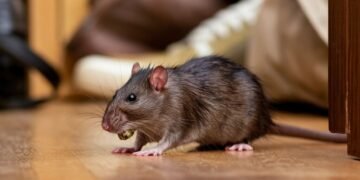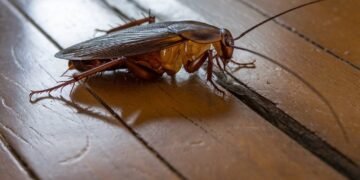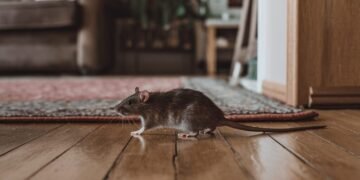Moths are tiny flying insects that are common in many homes. Unfortunately, their larvae will eat through your clothes, particularly if made from cotton or wool, and they will also consume and contaminate your food if given a chance.
But what attracts them to your property in the first place, and what is there to be done about it? Read on to understand what attracts moths to your house and how to eliminate them effectively.
What Attracts Moths to Your Home?
Two main subtypes of these species infest homes: the webbing and case-making clothes and pantry moths. While most people know these insects like to eat clothes, they may be unaware of some of the other reasons that attract these pests to your home.
During the night, these pesky little bugs will often gather around outdoor lighting sources or your windows. Once there, they can enter your home through small cracks or when your windows are opened.
Different moths may be attracted to different things in your house. Despite being the same, all subspecies of these flying bugs can have different motives for accessing your home. Look at the following factors that will answer your questions about what causes them to be attracted to your property.
Light sources
Moths are attracted to light and fly around lamps and other illumination sources. You ‘ve probably seen moths gather around outdoor lighting or windows where light comes through at nighttime.
Windows and doors
As moths fly towards well-lit areas of your home, especially porch lights or light-emitting from windows, they can easily enter your home through an open door or window. The light will make them enter the house via open windows, doors, cracks, or openings.
Infested food
Most household moth infestations occur from the purchase of moth-infested foods! Food sources include – but are not limited to – various types of grains, a wide assortment of nuts, spices, flour, and even chocolate.
The smell of sweat
They ‘re attracted to dirty clothes containing traces of sweat or pieces with stains. Larvae can receive the nutrients they need from sweat or stains. They also need sodium, which they can get in sweat, fur, or hair.
Certain fabric types
Many moths are attracted to clothing and fabrics from animal materials. And the appetite of these moths goes beyond just clothing. Anything made from natural textiles, such as carpets, rugs, curtains, and furniture upholstery, is susceptible to damage from clothing moths.
Darkness and humidity
Moths may gather to lay eggs near plumbing fixtures, under appliances, cracks, and other dark and isolated areas. They survive and multiply in dark corners of the house where there is some humidity too. Old cabinets in the bathrooms and trunks also serve as attractants for them.
How to Prevent Moths in Your Home?
Moths can be a pretty enough sight when seen fluttering around outdoor porch lights, but once they make their way inside your home, it ‘s a different story. Sadly, there ‘s no real way to repair a moth-eaten garment, but you can prevent this unpleasant situation from happening again.
The first time you are likely to discover the presence of these uninvited guests is when you see your woollens, only to find them filled with holes. Or when you open your pantry and find them (or their larvae) in your flour or rice. And before your clothes, furnishings, and food are ruined, you must know how to prevent moths from entering your house.
Keep your home clean and organised
Your best bet forwarding destructive moths are to keep your home, especially closet spaces, meticulously clean. Routine vacuuming will remove stray moth eggs before they even get a chance to hatch, while dusting eliminates debris and dander for them to feed on. So, be sure to keep things clean.
Closets are for clean clothes only
Moths are primarily attracted to human sweat, hair and body oil that are left on clothing, particularly those made of natural fibres (wool, feathers, fur, silk). That ‘s why washing your clothes before you store them is a must. If you leave clothes untouched for a few months, store them in airtight bins or vacuum bags. Moths and beetles don’t eat items made of synthetic or cotton fabrics, but you should clean those, too, if you store them with woollens.
Use pheromone strips
Most pheromone traps are entirely free from insecticides and toxins, making them safe for humans and animals. Moths are nocturnal and like to be in the dark, still places – where your trap should be! A moth trap is designed to be placed in one or more rooms in dark, undisturbed areas, such as underneath wardrobes. It should not be used inside a wardrobe.
Use mothballs
Mothballs are pesticides that go through “sublimation”. As they undergo this chemical reaction, they produce toxic fumes which eliminate the pesky little creatures, their larvae and eggs. Be warned that mothballs are toxic and pose a significant risk for humans (especially children) and pets. The side effects include headaches, nausea, coughing, and even eye and nasal irritation.
That ‘s why it ‘s best to follow the directions on the label to the letter when you use them.
Try dried lavender
Lavender is quite effective in keeping the moths at bay. Fill sachets with dried lavender or dip cotton balls in lavender essential oil. Then place them in your closets, drawers, and boxes of off-season clothes. Everyone ‘s favourite calming smell, but it will send moths flying to find a new hideout.
Ultimately, if all the above methods fail and moths keep reappearing, you should hire professional moth removal services. The experts will come and assess the extent of the infestation and apply the necessary treatments, so the problem gets resolved as quickly as possible.
Conclusion
Clothes and pantry moths can become especially troublesome when they start eating your woollens or when they get in your dry foods, like flour, rice and pasta. Unlike many other pests, moths don ‘t carry or transmit diseases, nor are they dangerous to humans, but it doesn ‘t mean they ‘re incapable of causing much damage to your home. So, the best way to get rid of moths is to never allow a moth infestation in the first place.
Prevention is the key! Sure, it can be challenging to stop moths sometimes, but following these practical steps to the letter will significantly reduce the risk of an infestation. And as a results, your home will be well-protected from the pesky flying insects, and you will thus have peace of mind
Recommended Posts:















